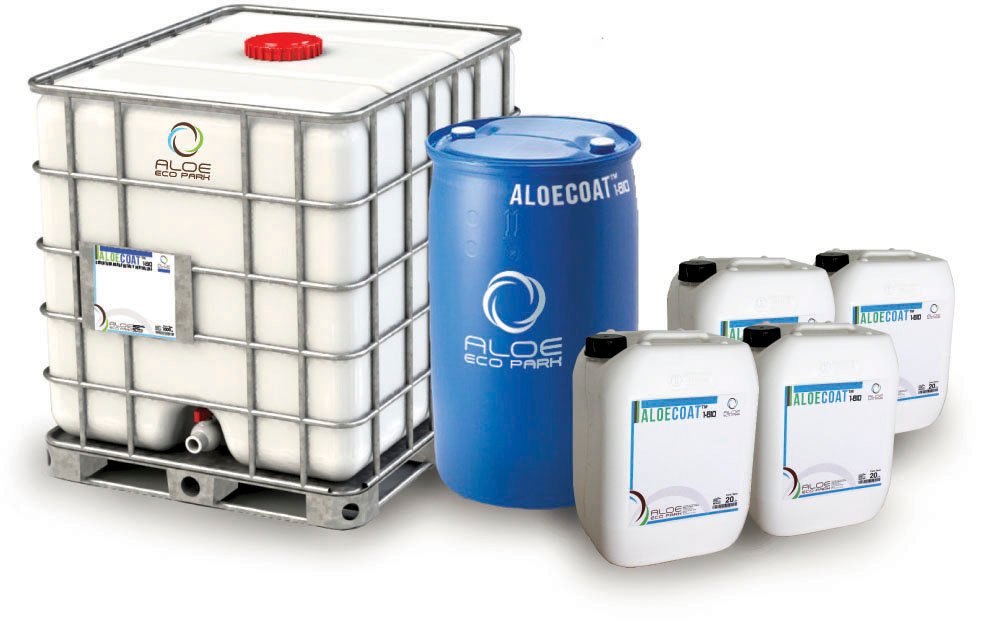Revolutionizing California’s Lettuce Industry with Aloecoat: A Sustainable Post-Harvest Solution
California, often called the nation’s “salad bowl,” dominates U.S. lettuce production, supplying approximately 75% of the country’s lettuce and leafy greens, with an industry valued at $3.93 billion in 2023.
As the state’s fifth largest commodity, lettuce thrives in regions like the Central Coast, Central Valley, and southern deserts, but faces significant post-harvest challenges, including spoilage, physiological disorders, and handling inefficiencies, which contribute to up to 45% waste in leafy greens.
Aloecoat, a 100% natural, plant-based edible coating derived from aloe vera, offers a transformative solution to reduce lettuce waste, extend shelf life, and streamline industry operations.
This article explores the key characteristics of California’s lettuce production, supported by the latest statistics, and demonstrates how Aloecoat can elevate post-harvest management for growers and distributors.
Characteristics of Lettuce Production in California
- Economic Significance and Production Volume
In 2023, California’s lettuce industry generated $3.93 billion in cash receipts, ranking it among the state’s top agricultural commodities. The state produces roughly 75% of U.S. lettuce, with Monterey County leading as the largest producer, followed by Imperial County. In 2022, Monterey County alone recorded $842 million in leaf lettuce production and $546 million in head (iceberg) lettuce, despite challenges like the Impatiens Necrotic Spot Virus (INSV), which reduced yields. However, high demand kept prices elevated, boosting overall value. In 2024, U.S. lettuce production (primarily from California) fell 6% from 2023 due to a 9% reduction in harvested acres in the state, reflecting pressures from regulatory costs and environmental factors. - Regional and Seasonal Diversity
California’s lettuce production is year-round, supported by three key regions with distinct growing seasons:- Central Coast (Salinas Valley, Santa Maria/Oxnard): Contributes 75% of the state’s lettuce, active from April to November due to ideal temperatures (60s–70s°F daytime, 40s°F nighttime).
- Desert Region (Imperial and Riverside Counties): Produces 19% of lettuce, primarily from November to March, leveraging cooler winter conditions.
- Central Valley (Fresno, Kings, Kern Counties): Accounts for 6% of production, serving as a transitional region in spring and fall.
These regions, including Monterey, San Benito, Santa Cruz, Santa Clara, San Luis Obispo, Santa Barbara, Ventura, Fresno, Kings, Imperial, and Riverside counties, enable California to supply 85% of U.S. lettuce consumed domestically in 2022.
- Climatic and Soil Requirements
Lettuce, a cool-season crop, thrives at daytime temperatures of 73°F and nighttime lows of 45°F, requiring loose, fertile, sandy-loam soils rich in organic matter. Drip irrigation and soil moisture monitoring are critical, especially amid California’s ongoing drought challenges. In 2023, sustainable practices like precision irrigation helped maintain yields despite water scarcity, but climate change continues to pose risks through heatwaves and wildfires. - Post-Harvest Challenges
Post-harvest losses remain a significant issue, with up to 45% of leafy greens lost due to:- Physiological Disorders: Russet spotting, brown stain, and tipburn, caused by ethylene exposure, high CO2 levels, or temperature fluctuations, lead to discoloration and reduced marketability.
- Microbial Spoilage: Bacterial soft rot and fungal infections, such as Botrytis cinerea, cause decay during storage and transport, particularly under high humidity (95–100% RH).
- Moisture Loss: Lettuce’s high water content makes it prone to wilting and loss of crispness, especially in leaf varieties like romaine, reducing shelf life.
- Handling Damage: Rough handling during harvest, sorting, or packing causes bruising and shatter, further diminishing quality.
These issues necessitate rapid cooling, controlled atmosphere storage (0–2°C, 95–100% RH), and careful handling to preserve quality, but inefficiencies persist, driving up waste and costs.
- Environmental and Regulatory Pressures
Climate change, including heatwaves, droughts, and wildfires, threatens lettuce production, increasing water demands and pest pressures. Regulatory costs have surged, with compliance expenses rising 63.7% from 2017 to 2024, reaching $1,600 per acre—a 1,400% increase since 2006. Restrictions on pesticides like neonicotinoids and pyrethroids are projected to reduce lettuce production by 7.3%, costing producers $160.3 million and consumers $694.28 million annually. These regulations may shift production to Arizona or Mexico, increasing consumer prices due to transport costs. The industry is adopting sustainable practices, such as organic farming (with $11.8 billion in organic sales in 2023) and water-efficient irrigation, to meet environmental standards and consumer demand. - Labor-Intensive Operations
Lettuce production relies heavily on manual labor for planting, weeding, and harvesting, with Monterey County employing an estimated 41,000–50,000 farmworkers annually in 2021–2022. Post-harvest processes, including sorting, packing, and cooling, require precision to minimize damage. Delays in cooling or rough handling exacerbate waste, while rising labor costs and regulatory compliance add financial strain.
Aloecoat: Transforming Post-Harvest Lettuce Management
Aloecoat, a 100% natural, edible coating derived from aloe vera’s polysaccharides, enzymes, and bioactive compounds, forms a protective biofilm on lettuce, reducing respiration, perspiration, and microbial growth.
This innovative solution addresses California’s lettuce industry challenges, enhancing sustainability and profitability. Here’s how Aloecoat can make a difference:
- Reducing Post-Harvest Waste
- Moisture Retention: Aloecoat’s polysaccharide-based coating minimizes moisture loss, preserving lettuce crispness and preventing wilting, particularly for high-water-content varieties like romaine and butterhead. This reduces losses from shriveling and maintains marketability.
- Microbial Control: Aloe vera’s anthraquinones (e.g., aloin) provide natural antimicrobial properties, inhibiting bacterial soft rot and fungal pathogens like Botrytis cinerea, reducing spoilage during storage and transport at 0–2°C.
- Physiological Disorder Prevention: By regulating ethylene exposure and stabilizing cellular integrity, Aloecoat mitigates disorders like russet spotting and tipburn, ensuring visual appeal and quality for retail markets.
- Extending Shelf Life
Aloecoat slows lettuce respiration rates (10–20 ml CO2/kg·hr at 0°C) and ethylene production, extending shelf life under optimal storage conditions (0–2°C, 95–100% RH). This enables longer storage and transport periods, supporting California’s role as a global supplier of leafy greens, with exports contributing to the state’s $22.4 billion agricultural export market in 2023. - Enhancing Sustainability
As a biodegradable, non-toxic coating, Aloecoat aligns with California’s sustainability goals and consumer demand for clean-label products. It reduces reliance on synthetic chemical treatments, such as fungicides, and supports the state’s organic farming sector, which saw $11.8 billion in sales in 2023. By minimizing chemical inputs, Aloecoat enhances market competitiveness for organic and eco-friendly lettuce. - Improving Operational Efficiency
- Simplified Handling: Aloecoat’s application (via dipping or spraying) integrates seamlessly into existing packing lines, reducing labor-intensive sorting or trimming of damaged leaves.
- Cost Reduction: By minimizing waste (up to 45% in some cases), Aloecoat lowers losses from unsellable product and reduces equipment maintenance costs due to microbial buildup in storage systems.
- Market Advantage: High-quality, longer-lasting lettuce strengthens California’s position in domestic and international markets, supporting the $3.93 billion industry and boosting grower profitability.
- Climate Resilience
Aloecoat helps mitigate climate-related challenges by protecting lettuce from heat-induced quality degradation and environmental stressors. Its antioxidant properties, derived from aloe vera’s phenolic compounds, preserve flavor, texture, and nutritional value, ensuring premium quality despite drought or heatwaves, which have impacted yields in 2023 and 2024.
The Future of California’s Lettuce Industry with Aloecoat
California’s lettuce industry, valued at $3.93 billion in 2023, faces a complex landscape of opportunities and challenges, from rising regulatory costs to climate pressures and post-harvest losses.
Aloecoat offers a cutting-edge solution, leveraging aloe vera’s natural properties to reduce waste, extend shelf life, and enhance operational efficiency.
At aloegel.biz, we are committed to advancing sustainable agriculture with innovative aloe-based solutions.

